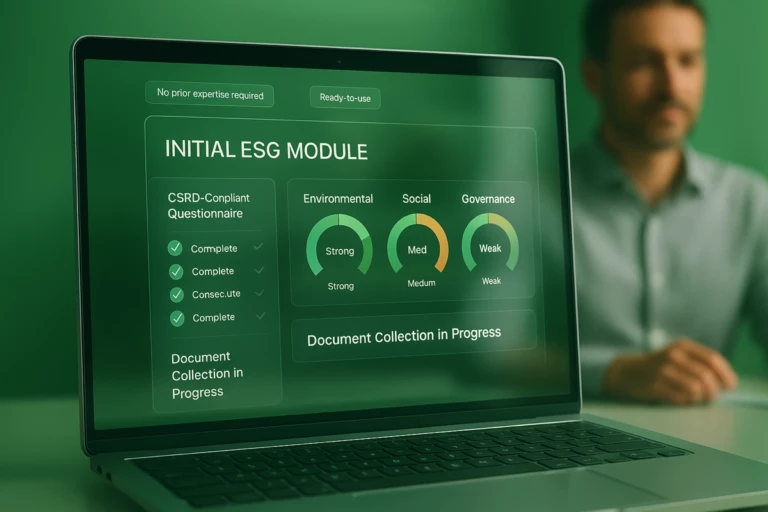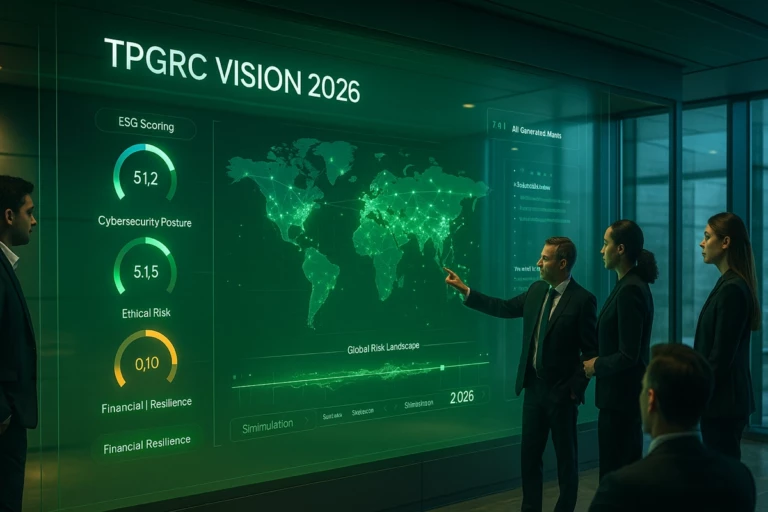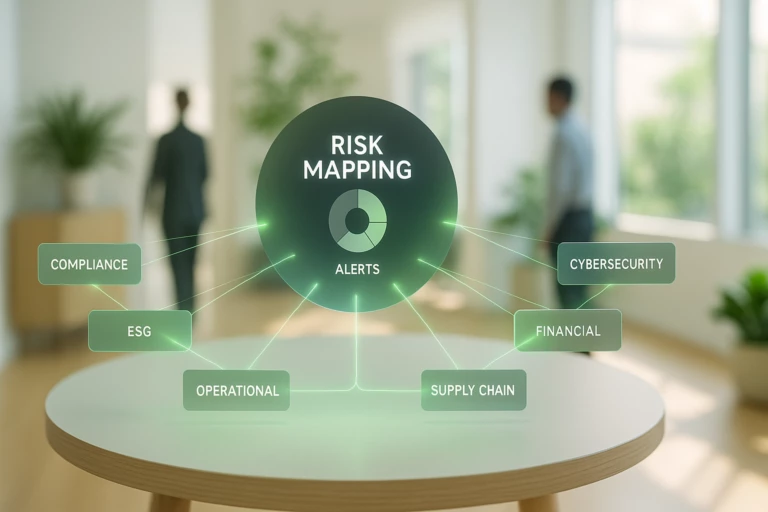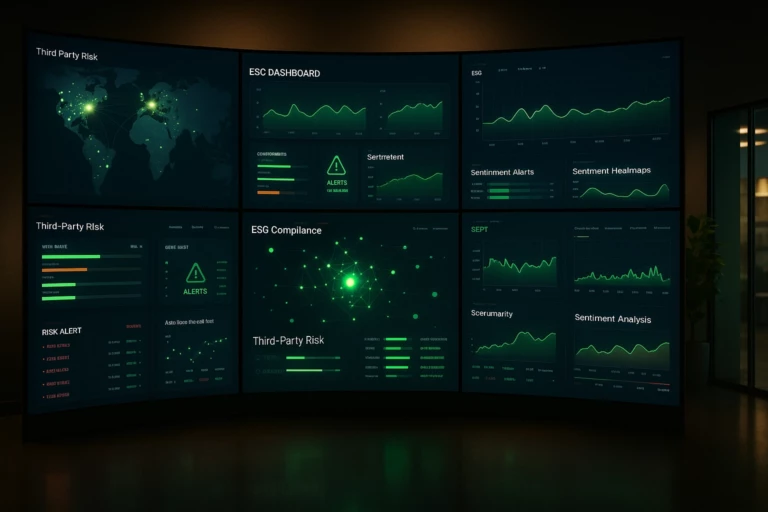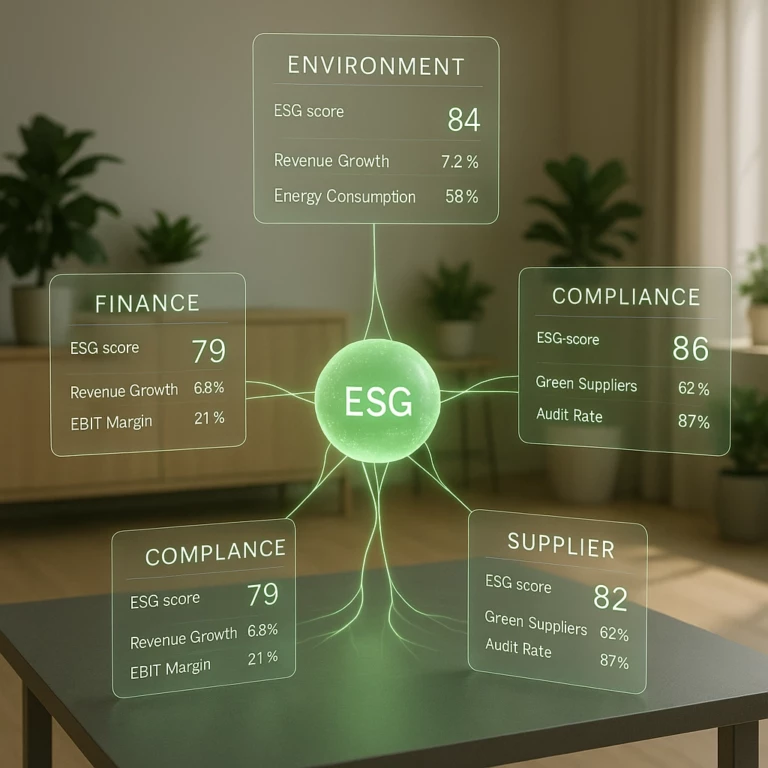Supplier ESG Evaluation: How to Take Your First Steps Without Complexity
In response to increasing regulatory demands (CSRD, CSDDD) and growing stakeholder pressure, organizations understand they must integrate ESG into their supplier management processes. Yet with evolving standards, a lack of appropriate tools, and competing priorities, getting started can quickly feel overwhelming. A Supplier ESG Project… That Often Gets Stuck Many procurement departments and ESG managers […]
TPRM Visions 2026: Expanding the Evaluation Spectrum to Anticipate Emerging Risks
2026: A Turning Point in Third-Party Evaluation Third-party management is undergoing a major transformation. Until now, companies have focused their evaluations on the most immediate risks: supplier financial stability, ethical compliance, and fraud prevention related to banking information. These areas remain critical. But by 2026, TPRM (Third Party Risk Management and Compliance) will broaden its scope to […]
Why Connecting Your Risk Mapping to TPRM Is a Game Changer
In a context where third-party ecosystems are expanding, organizations can no longer afford to manage their vendor relationships blindly. Companies are now selecting partners based on increasingly specific criteria, and many have implemented risk mapping tools to gain a clearer view of the risks posed by their subcontractors. They must actively manage third-party risks. According […]
Why integrate media monitoring into your third-party evaluation?
With the rapid acceleration of digital information and the proliferation of media sources, real-time monitoring of your third-party partners’ media presence has become a critical strategic issue. Media monitoring is now an essential part of collaborative evaluation processes for any analyst seeking a comprehensive view of third-party risk. Whether the information is positive or negative, […]
Assess the ESG maturity of third-party partners to optimize your carbon footprint
Assessing the ESG maturity of your third-party partners directly impacts your sourcing strategy and the environmental footprint of your operations. Identifying the level of environmental commitment and compliance within your partner ecosystem is now a critical insight for any organization aiming to improve sustainable performance. However, collecting the necessary documents and data can be complex […]
Manage Your Supplier Assessments by Context and Project for a 360° View
Unlock the Power of Context-Based Evaluations: Gain Clarity and Impact Supplier assessments are often structured as a top-down relationship: from the client (or buyer) to a panel of suppliers. However, these suppliers frequently operate within shared contexts — whether that’s a product, a contract, or an entire supply chain. Managing third-party evaluations by context gives […]
Third Parties: Why You Can No Longer Ignore Risk Convergence
When it comes to supplier management, focusing on a single risk often means exposing yourself to many others. For a long time, companies have concentrated on financial risks: solvency, credit ratings, payment delays… But recent crises have proven that supplier risks are multiple, systemic, and deeply interconnected. A supplier may be financially sound… yet vulnerable […]
Why Assessing Upstream Suppliers Is Essential
Upper-Tier Suppliers: The (Too Often) Overlooked Risk in Your Supply Chain Modern procurement chains rely on a multitude of actors, each contributing to value creation—extraction, manufacturing, assembly… The final product is never the result of a single supplier but rather the outcome of an often international ecosystem. Yet, most organizations still focus their efforts and […]
ESG Platforms: Centralized Data for Sustainable Performance
The growing interest of investors and businesses in Environmental, Social, and Governance (ESG) criteria comes with significant challenges in assessing third-party partners. According to the DLA Piper report, ESG evaluation of external providers has become critical, particularly with the CS3D directive (Corporate Sustainability Due Diligence) coming into force on July 25, 2024. This directive requires […]
